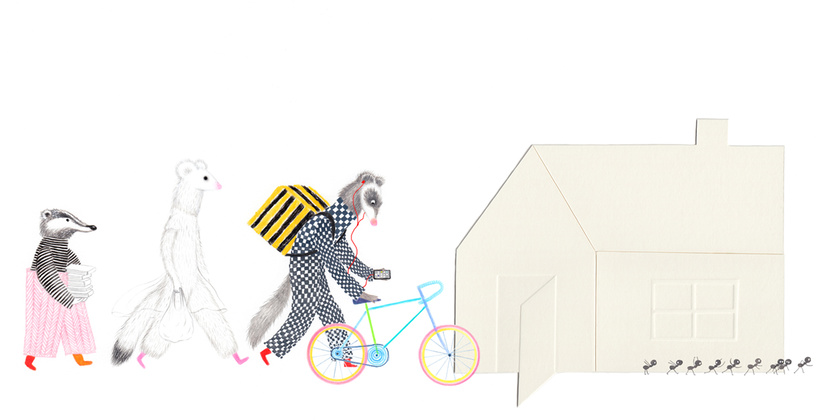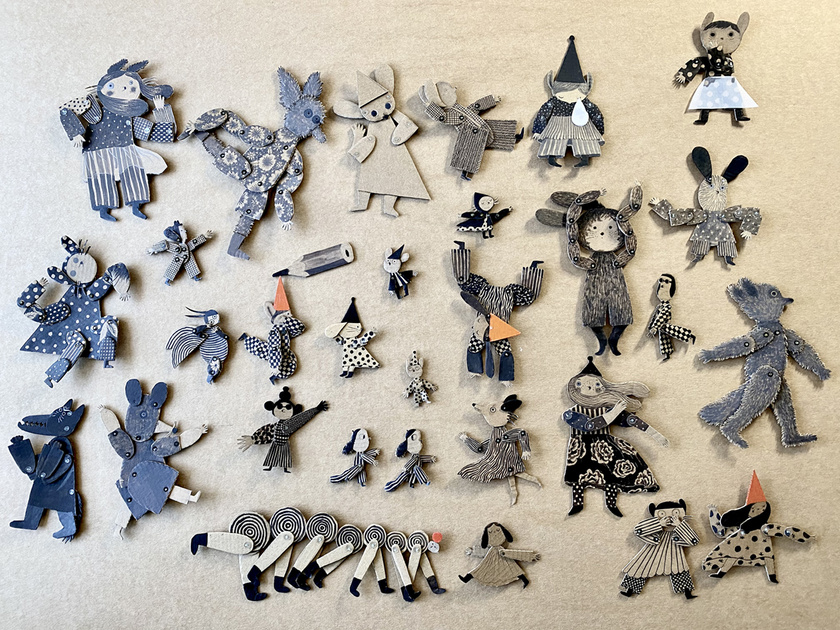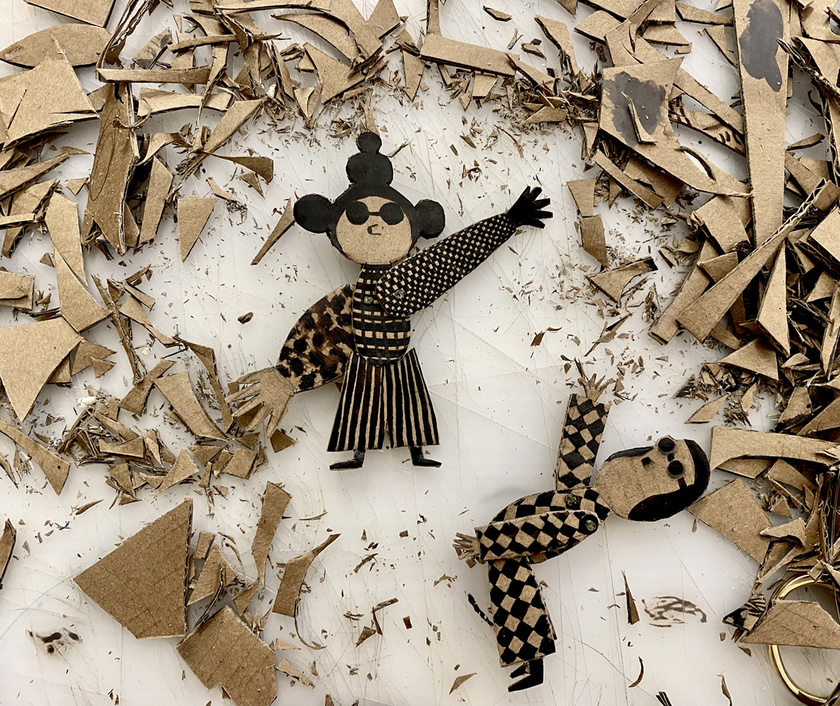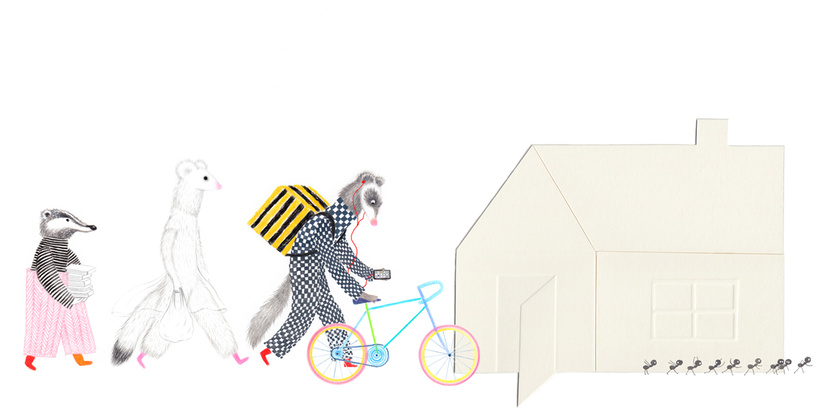There are 2 winners of the 2020 Golden Pinwheel Illustration Competition Luo Ling and Veronica Neacșu. Veronica Neacșu was born in Bucharest in 1983 and now lives the same city. Her work, Mumuri's Sleep, stood up from over 2,200 submissions worldwide to win one of the three Golden Pinwheel Special Mentions. From her work, We see how bold and subtlety can be beautifully combined in an illustrator's work. Veronica built a distinctive point of view regarding how to maintain vigorous vitality and how to balance the visual impact of the work and the degree of detail.
Q&A
Q:Veronica, it is not easy to find much written information about you on the Internet. We are very curious about who you are and where your passion or illustration comes from!
A:Yes, indeed. I am not at my best when it comes to sharing my work in the virtual space. I believe that there are people who like communicating on social media and feel at ease with it, or they plan with care to have certain exposure. I must admit that this is my weak point. I live and work in Bucharest, where I graduated in arts. At University, we don't have a specific department for illustration, so in my first years, I knew very little about it.

Shortly after graduation, I was lucky enough to meet Stela Lie, a teacher at the Art's University and the founder of Romania's first professional group of illustrators, the "Illustrator's Club". I believe it was a turning point for me. From that moment, I focused exclusively on illustration. In the beginning, I knew little, but with time I built experience working on many picture books that improved my skills and knowledge.
A few years ago, I decided to start developing my own stories. I postponed my main collaborations with publishers and dedicated time to my own projects. I have four personal projects so far, and I am currently working on completing and publishing them. I see myself as an artist. I see no difference between an artist and an illustrator, and I don't think illustrating picture books is a minor work. The work of an illustrator can be so powerful, and I am proud and grateful to be one.
Q:Mumuri's Sleep, like all your other work, is very distinctive for its meticulousness. Small formats, very clean and precise strokes applied indistinctively to rich grey scales or explosive colour palettes… Have you always worked that way? What are the techniques you feel at ease with?
A:I think that one’s working style comes as a reflection of their personality. There are things you choose on purpose, things you learn and others that just happen to be part of you.
Clean and airy images are features that I like a lot. In the very beginning, I was shy with the paper, but my working style progressively took shape—that is a natural process that requires time. I believe it takes time to get to know yourself and grow.
I like to play with the surface, with quantities, textures, bold colours on the one hand, and on the other hand, with light, delicate, barely touched areas. I find pleasure working on small surface too, it fits me well. Also, I try not to be in control of all my lines because I have learned that from the moment you let the line flow spontaneously, freshness arouses.
Even though my main technique is executed with pencils on paper, I sometimes like to take a step into more experimental lands, like paper cut shapes, embossing, cardboard-cut illustration, keeping curiosity and playfulness alive.

Q:You also seem to like working with paper textures, as shows your recurrent use of embossing. Can you tell us more about how you create these beautiful effects? And do you often work with digital tools?
A:I have a printing press at my studio. I always knew that I would incorporate embossing in my work at some point and started doing so a few years ago. I find it powerful because where I apply it, the character smoothly pops up from the page, creating a surprising effect for the viewer. It is surprising, powerful and delicate at the same time, and I like that.
For example, I have intentionally chosen on purpose to emboss Mumuri’s imaginary friend, as it gave the character a light, ephemeral contour that makes him look more like an illusory shape than a real drawing. It matched really well with the storyline. Embossing has a flaw when scanned or photographed, as the shapes fade in the pictures, and you can’t see them as well as they are in reality.

Q:What are the roots of the story told in Mumuri's Sleep?
A:That specific moment of trying to fall asleep in a dark room generates a lot of creativity in a child’s mind. Unthinkable questions sprout, funny ideas and deep thoughts mix together like in a carousel. There are thousands of stories and picture books about bedtime. I guess it is a common topic, but in Mumuri’s sleep I have tried to give an old topic a fresh approach.

Q:You seem very active in what refers to participating in art competitions, often with great success. Why do you think it is useful to take part in competitions?
A:I was surprised and grateful at the same time that I won Golden Pinwheel Grand Prix. My main thought when I applied was to try to be part of a larger community besides that of my own country. I needed to measure my work with people around the world. The feeling I had when I visited the Bologna Children's Book Fair was that of a nourishing exchange and experience, and I needed an opening to something new and similar, so I felt that I needed to give it a chance. An award gives you exposure and the chance to be in contact with people from the same area of interest. It helps you know better other illustrators from around the world.
Of course, taking part in contests does not exclude the hard work that one has to do to build up an illustrator career. For me, it was valuable and eye-opening.
Q:We know little about Romanian children's books and picture book artists. Can you tell us more about it?
A:Romania has a very small market when it comes to picture books. In the last ten years, publishers have shown an increased interest in Romanian illustrators, and things started to move in a good direction. This path is influenced by a lot of factors—budget, buyers’ habits, their relationship with books, the local context and much more, just like in any other market, I guess.
In Romania, there are many amazing illustrators, which is a good sign. Still, the market cannot absorb so many talents because it is not a profitable field. A good picture book comes with efforts from every part implied in the book creation process. It takes time to change things, but there are also signs that it will improve with time.
There are independent artists who provide quality work, and self-publish their books, but this is more of a rarity. Going to Bologna opened my eyes, it was at first a shock to see at what extent picture books can be treasured, but we can’t compare markets.





